Menu
No products in the Quote Basket.
9 am to 6 pm PST time
No products in the Quote Basket.
New Generation, Ultra Hard, Combination Materials Require Different Blades & Cutting Methods
Introducing the latest in diamond blade technology, the SMART CUT® Precision Diamond Blades are tailor-made for cutting a wide range of materials, from ultra-hard to soft. These metal-bonded, sintered diamond blades excel in challenging applications, ensuring fast, clean, and minimal-chip cuts. Incorporating SMART CUT® technology, these blades handle materials ranging from 4.0 to 9.0 on the Mohs hardness scale, making them ideal for cutting diverse materials like ultra hard porcelain, stone of various hardness’s and glass in one go. They are particularly effective in cutting new, hard-to-slice materials where standard tile blades fall short.
These UNIVERSAL application blades significantly reduce chipping, enhance cut quality, and speed up the cutting process. They are perfect for cutting ultra-hard materials that other diamond blades struggle with. If you’re facing issues with your current blade, such as chipping or breaking materials, our SMART CUT® UNIVERSAL Blades are the solution you need. They’re crafted for general, unique, and innovative construction materials and applications. For industrial and specialized applications, please contact us for tailored recommendations.
Materials Used On:Porcelain, Engineered Stone, Natural Stone, Granite, Ceramics, Composite Stone, Marble, Quartzite, Dekton, Flat Glass, Composites, Non Ferrous Metals, Other Very Hard Natural & Man Made Materials
Our blades are designed to surpass the performance of any Super Premium or Supreme blade available on the market. At UKAM Industrial Superhard Tools, we focus on delivering only the best quality, unlike other companies that offer various blade grades. That’s why Fortune 500 companies, Military Contractors, Space & Science Organizations like NASA, and numerous professional users trust us for their cutting needs. Discover the difference with our top-tier SMART CUT® Precision Diamond Blades.
Diameters Available: 8” (302mm) to 16” (400mm)
Bond Type: Sintered (Metal Bond)
Kerf Thickness: .054” (1.37mm) .085” (2.16mm)
Inside Diameter: 5/8” (1.37mm), 1.0” (25.4mm). Bushes to smaller diameters are available or we can expand the arbor size to almost anything you want same day
Diamond Grit size: Medium
Diamond Concentration: Medium
Diamond Depth: 7mm and 10mm
Application:Porcelain, Engineered Stone, Natural Stone, Granite, Ceramics, Composite Stone, Marble, Quartzite, Flat Glass, Composites, Non Ferrous Metals, Other Very Hard Natural & Man Made Materials
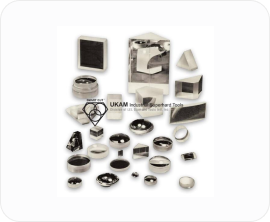
Precision Optics
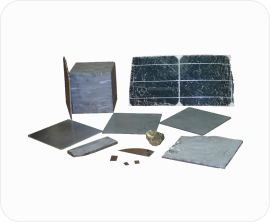
Hard to Medium Hard Ceramics
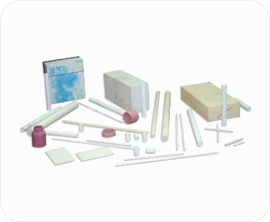
Alumina Ceramics
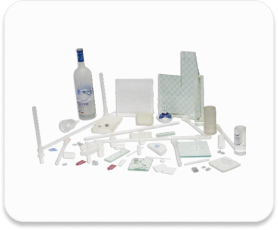
Glass, Quartz, BK7
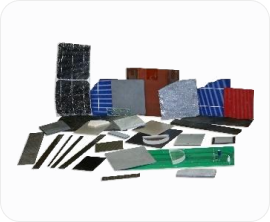
Thin Wafers & Substrates such as Silicon & Galium Arsinide
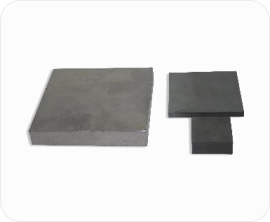
Graphite
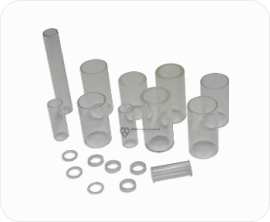
Glass, Quartz, & Pyrex
Tubing
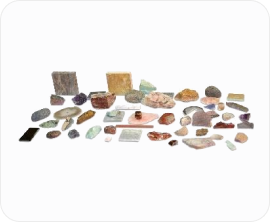
Material Glass & Quartz
These blades are designed to cut a wide range of materials, from ultra-hard to soft, including stone, porcelain, dekton, glass, and various new generation materials.
SMART CUT Universal Blades utilize advanced SMART CUT™ technology, offering faster cutting speeds, minimal chipping, and compatibility with a wide range of material hardness (4.0 to 9.0 on the Mohs scale). They are designed to outperform Super Premium or Supreme blades.Their advanced technology ensures a smoother, cleaner cut.
Yes, SMART CUT Universal Blades are suitable for industrial applications. For specific recommendation please contact us
Yes, these blades are versatile enough for both professional and DIY projects, offering high-quality cutting for a range of materials.
SMART CUT Universal Blades are designed for durability and longevity, typically lasting longer than standard blades due to their high-quality construction and advanced technology.
No, these blades are designed for universal application and should fit most standard cutting equipment such as most tile saws, masonry saws. As we can modify the inside diameter (arbor size) to anything you want usually same day. These blades can fit almost any equipment, as long as the rpm’s and horse power is compatible for the materials you are cutting.
The choice depends on the material hardness, density, shape and the specific requirements of your project (such as desired cutting speed, chipping level, surface finish).
Yes, SMART CUT Universal Blades come in various sizes from 8” (200mm) to 16” (400mm). Other blade specifications can be produced with usually very small to no minimum order quantities.
Always follow standard safety procedures for cutting tools: wear protective gear, ensure secure blade installation, and operate the equipment according to the manufacturer’s instructions.
SMART CUT Universal Blades feature sintered, metal-bonded diamond construction, designed for a range of materials with hardness ratings from 4.0 to 9.0 on the Mohs scale. They come in various sizes to fit standard cutting equipment and are engineered for minimal chipping and fast cutting speeds.
These blades are designed to be used only with coolant. Dry cutting is not feasible.
While SMART CUT Universal Blades are designed for universal application, specific materials might require blades with particular characteristics such as different bond types, diamond grit sizes, concentrations, and bond hardnesses and compositions. We have blades available for almost any specific application & can custom manufacture to your specific requirements. Contact us for recommendation.
Regularly check the blade for wear and damage, use it at the correct speed and feed rate, and store it properly when not in use. Avoid pushing the blade too hard against the material, which can cause premature wear.
Their unique bond compositions and SMART CUT™ technology make them particularly effective in cutting new, hard-to-slice materials where standard tile blades may fail, offering versatility in today’s evolving construction and manufacturing industries.
Yes, like most high-quality diamond blades, a brief break-in period is recommended for optimal performance. This can be done by making several cuts in a softer material before using the blade on the intended material.
SMART CUT Universal Blades may have a higher upfront cost compared to standard blades, but their durability, versatility, and superior performance offer greater value over time, reducing the need for frequent replacements. You will get best Return on Investment when using these blades.
Yes, their ease of use and high-quality cutting capabilities make them suitable for a wide range of users, from professional contractors to DIY enthusiasts.
No we have other blades available from stock for these unique applications. Please contact us for recommendation.
While they are versatile, there may be certain materials or specific cutting applications that are not suitable for these blades. They are not well suited for very abrasive materials and gummy materials and ultra hard materials above 9.5 mohes scale of hardness. Please contact us if you have specific questions.
These blades can be dressed with dressing stick to re-expose and sharpen the diamond particles inside the metal matrix. Continuous rim blades cannot be re-tipped like segmented blades.
Standard safety equipment including eye protection, gloves, ear protection, and appropriate dust masks or respirators should be used. Ensure your work area is well-ventilated, especially when dry cutting. Please note dry cutting is not recommended
SMART CUT™ technology optimizes the distribution and bonding of the diamond particles in the blade, enhancing cutting efficiency, reducing heat generation, and improving the longevity of the blade.
these are designed to be used with stationary cutting equipment. Not hand held machines
Signs like reduced cutting efficiency, excessive chipping, visible wear on the diamond section, or unusual vibrations during cutting indicate it might be time to replace the blade.
Store the blades in a dry, cool place away from direct sunlight and extreme temperatures. Avoid stacking heavy items on the blade and protect it from impact or bending.
Yes, these blades are designed for precision cutting with minimal chipping, making them suitable for delicate materials where precision is crucial, such as certain types of glass, porcelain, dekton, and fine stone.
Yes, they are effective in cutting composite materials, including those used depending on the composite material composition and desired cut quality. For precision testing applications we have other blade specifications better suited for that purpose or cutting composite rods or tubing.
While SMART CUT Universal Blades are primarily designed for non-metallic materials, they may be able to handle certain metal-embedded materials. These have been tested on number non ferrous metals. Depending on your prefer cutting speeds and cut quality, we have other blades available specifically suited for these applications.
Yes, SMART CUT Universal Blades can handle thick materials, but it’s important to ensure the blade diameter is suitable for the material thickness.
Their precision cutting makes them suitable for artistic or sculptural work, especially in materials like stone or glass, where detail and minimal chipping are important.
Yes, different materials may require different blade speeds and feed rates for optimal cutting. Generally, harder materials require slower speeds and feed rates, while softer materials can be cut faster. Please check on our knowledge center for recommendations and contact us for specific recommendations.
Yes, these blades are well-suited for cutting natural stones with high quartz content, such as quartzite, offering clean cuts with minimal chipping.
SMART CUT Universal Blades are designed to effectively cut through dense and abrasive materials, including flint and granite, maintaining a balance between cutting speed and blade wear. For cutting very abrasive materials such as alumina oxide, sand stone, we have blades specifically suited for this purpose.
Absolutely, SMART CUT Universal Blades are designed to cut porcelain tiles with minimal chipping, ensuring a smooth and precise edge, which is particularly important for visible surfaces.
Yes, due to their precision and reduced chipping, these blades are suitable for laboratory settings where accurate and clean cuts of geological samples are required. Depending on your desired cutting speed and cut quality, we have other blades in stock more suites for this purpose.
They are highly effective in cutting synthetic materials like quartz composites, providing clean cuts without damaging the material’s integrity.
Yes, these blades can efficiently cut through thick pavers and bricks. However we other blades that are more suites for this purpose.
SMART CUT Universal Blades are designed to handle materials with uneven hardness effectively, maintaining consistent cutting performance throughout the material.
Yes, their precision cutting technology makes them ideal for soft materials like limestone or marble, minimizing edge chipping and ensuring a clean finish.
They are capable of cutting advanced materials like fiber-reinforced concrete, though it’s important to select the appropriate blade type for the specific material characteristics.
They are well-suited for cutting engineered stone, providing smooth cuts while maintaining the integrity of the material, crucial in applications like countertops and decorative elements.
Yes, SMART CUT Universal Blades offer the precision required for detailed architectural work, making them ideal for intricate carvings and moldings in stone.
Absolutely, they are designed to cut through high-density and vitrified ceramics, delivering clean, precise cuts without compromising the material’s structure.
SMART CUT Universal Blades can be used for underwater cutting, maintaining their effectiveness and precision. However, appropriate safety measures and equipment should be used in such environments.
Yes, they can cut through asphalt and bitumen-based materials, often used in road construction and repair applications.
Yes, SMART CUT Universal Blades are effective for cutting terrazzo, a composite material, often used in flooring, ensuring a clean cut for installation or repair purposes.
While primarily designed for stone and similar materials, SMART CUT Universal Blades may be capable of cutting non-traditional materials like carbon fiber or fiberglass. However, it’s recommended to consult with the manufacturer for the best blade choice for these materials.
They can be used for certain rubberized materials or composites, though the cutting effectiveness may vary depending on the specific material composition.
SMART CUT Universal Blades are particularly effective in cutting through hardened concrete with aggregate, maintaining cutting efficiency and blade longevity.
Yes, they can handle cutting decorative stones with inlays or embedded materials, offering precision and care necessary for such detailed work.
Cutting depth limitations depend on the blade diameter and the equipment used. It’s important to match the blade size to the material thickness and follow our guidelines for optimal performance. Also make sure the horse power of cutting machine and coolant delivery system is compatible for material being cut.
Yes, they are suitable for bevel cutting in materials such as granite or marble, providing the precision and clean cuts required for such detailed work.
SMART CUT Universal Blades are highly effective in cutting synthetic stones, including agglomerates and composites, ensuring clean and precise cuts without damaging the material.
While they are primarily designed for non-metallic materials, SMART CUT Universal Blades can handle natural stones with metallic inclusions. This is where the advantages of our universal blades stands out.
Yes, they are capable of cutting through hard tiles such as porcelain gres, providing clean cuts with minimal chipping, crucial for finished surfaces.
They perform well in cutting reclaimed bricks or tiles, which is essential in restoration work where preserving material integrity is key.
Yes, their design and construction make them effective for slicing through dense, hard igneous rocks, maintaining precision and minimizing blade wear.
These are will suited for cutting soda lime and borosilicate glass that is flat. For cutting tubing and rod we have other blade specifications available from stock to minimizing chipping. Such as our resin bond diamond cut off blade series. For tempered glass we also have other blade specifications better suites for this purpose.
SMART CUT Universal Blades are well-equipped to handle large format tiles or slabs, ensuring straight, clean cuts crucial in large installations.
Yes, they can effectively cut through slate and similar layered natural stones, maintaining the integrity of the layers and providing a clean cut.
Absolutely, their precision and minimal chipping make them ideal for artistic installations and custom tile work, where detail and finish quality are paramount.
SMART CUT Universal Blades are designed to effectively handle materials with varying densities, such as layered composite stones, providing consistent cutting performance without damaging the layers.
Yes, they are capable of cutting firebricks and refractory materials, often used in high-temperature applications, ensuring a clean and precise cut.
Absolutely, they are ideal for intricate cuts in thin marble and stone veneers, offering the precision and delicate handling required for such materials.
Yes, they are particularly effective for cutting exotic stones with high mineral content, maintaining cutting efficiency and minimizing wear.
Sintered (metal bond) blades are not designed for this application. Usually these materials are cut with carbide blades. Specific type of diamond cutting blades such as nickel bond or braised bond can be used for this application which also are available from stock.
They are well-suited for cutting hybrid materials like ceramic-embedded concrete, offering the versatility and strength required for such complex materials. Yes depending on your preferred cutting speed and cut quality.
Yes, their precision and quality make them suitable for sculpture and artistic stone carving, where detail and accuracy are crucial.
SMART CUT Universal Blades are well-equipped to handle ultra-compact surfaces like Dekton or Neolith, offering the precision and durability needed for these high-density materials. Depending on your desired cutting speed and surface finish. We have other blades available better suited for this application.
No these are not suited for this purpose, we have other blades available better suited for this application.
Yes, they are effective in cutting crystalline materials like quartz depending on your desired surface finish and chipping level, We have other blades available better suited for this application.
Yes, they are suitable for cutting historical restoration materials, offering the delicacy and precision required for preserving the integrity of antique bricks or tiles. Yes these can be used for this application, we also have other blades available better suited for this application.
No these are not designed for this application. We have other blades available better suited for this application.
SMART CUT Universal Blades are capable of cutting modern facade materials like fiber cement, providing the strength and precision needed for these applications. We have other blades available better suited for this application.
Yes, they are ideal for precision cuts in countertop materials, including solid surface composites, ensuring a clean and precise finish. As long as they are used on stationary saws with coolant
SMART CUT Universal Blades can cut through special finish materials, including textured or patterned tiles, maintaining the aesthetic integrity of the surface.
While primarily intended for hard materials, SMART CUT Universal Bladesare not designed for cutting these ultra hard and dense materials that are usually 9.5 on mohes scale of hardness or harder. We have other blades available better suited for this application.
SMART CUT Universal Blades may handle rubber composites or mixed materials, however since these are very soft and gummy materials. We have other blades available better suited for this application.
Yes, they are highly suitable for cutting geological specimens, offering the precision and minimal contamination required for scientific analysis. To minimize secondary operations such as grinding and polishing, we have other blades available better suited for this application.
For cutting synthetic sports surfaces, it’s important to choose a blade designed for softer, more flexible materials. We have other blades available better suited for this application.
Yes, they are effective in cutting aerated or cellular concrete, providing clean cuts without damaging the material’s structure. We also have other blades available better suited for this application.
The effectiveness of cutting electrically conductive materials depends on the specific material composition. We have other blades available better suited for this application.
SMART CUT Universal Blades are well-suited for cutting exotic and decorative stones, maintaining the integrity of intricate patterns and inclusions if doing straight cutting. For cutting interacte patterns we have specialized blades for that purpose
Yes, they can cut through thick industrial ceramics or refractories, offering the durability and strength needed for such demanding applications.
Yes, their precision and versatility make them ideal for complex cuts in modular construction materials, where accuracy and consistency are key. We have other blades available better suited for this application.
We have other blades available better suited for this application.
SMART CUT Universal Blades may be capable of cutting automotive materials like carbon fiber composites, We have other blades available better suited for this application.
Cutting hardened security or bulletproof glass requires specialized blades. We have other blades available better suited for this application.
SMART CUT Universal Blades are well-suited for cutting innovative building materials like translucent concrete, We have other blades available better suited for this application.
These can be used for aerospace materials, including composites and lightweight alloys, depending you’re the required cut quality / surface finish, shape of material, and coolant type used. We have other blades available better suited for this application.
Sintered (metal bond) blades are not recommended for this application. We have available nickel bond and braised bond blades that are better suites for this application
These blades might handle heavy-duty industrial plastics or polymers. However, due to the diversity of these materials, there are blades that we have available that are much better suites for this purpose
They perform well in cutting synthetic stone products, even with varied textural finishes, maintaining precision and minimizing surface damage.
Yes, SMART CUT Universal Blades are suitable for restoration projects, offering the precision and care needed when working with historical or antique materials.
Image | Item No. | Description | Price | Quantity | Add to cart |
|---|---|---|---|---|---|
1 Gallon Blue SMART CUT® General Materials Formula Synthetic Water Soluble Coolant | $99.81 | Max: Min: 1 Step: 1 | |||
1 Quart Blue SMART CUT® General Materials Formula Synthetic Water Soluble Coolant | $34.81 | Max: Min: 1 Step: 1 | |||
5 Gallons Blue SMART CUT® General Materials Formula Synthetic Water Soluble Coolant | $317.41 | Max: Min: 1 Step: 1 | |||
55 Gallons Blue SMART CUT® General Materials Formula Synthetic Water Soluble Coolant | $1,745.00 | Max: Min: 1 Step: 1 | |||
1/2″ x 1/2″ x 6.0″ White Recommended for coarser grits found in segment wheels, core drills, or Blanchard grinding. Excellent performance on 120 grit tools. | $8.65 | Max: Min: 1 Step: 1 | |||
1.0″ x 1.0″ x 6.0″ White Recommended for coarser grits found in segment wheels, core drills, or Blanchard grinding. Excellent performance on 120 grit tools. | $15.99 | Max: Min: 1 Step: 1 | |||
1/2″ x 1/2″ x 6.0″ White For use on diamond tools 150 to 220 Grit Size. | $8.65 | Max: Min: 1 Step: 1 | |||
1.0″ x 1.0″ x 6.0″ Black Recommended for use in Diamond Tools 150 Grit Size (mesh size) or finer. | $15.39 | Max: Min: 1 Step: 1 | |||
2.0″ x 2.0″ x 6.0″ Black Recommended for use in Diamond Tools 150 Grit Size (mesh size) or finer. | $39.47 | Max: Min: 1 Step: 1 | |||
1.0″ x 1.0″ x 6.0″ Black Recommended for coarser grits found in segment wheels, core drills, or Blanchard grinding. Excellent performance on 120 grit tools. | $15.99 | Max: Min: 1 Step: 1 | |||
2.0″ x 2.0″ x 6.0″ Black Recommended for coarser grits found in segment wheels, core drills, or Blanchard grinding. Excellent performance on 120 grit tools. | $39.47 | Max: Min: 1 Step: 1 |
Image | Item No | Outside Diameter | Diamond Thickness | Diamond Depth | Arbor Size (Inside Diameter) | Quantity | each | Add to cart |
|---|---|---|---|---|---|---|---|---|
8" (203.2mm) | .054” (1.37mm) | 7mm | 5/8” (15.87mm) | Max: Min: 1 Step: 1 | $78.20 | |||
10" (254mm) | .060” (1.52mm) | 10mm | 5/8” (15.87mm) | Max: Min: 1 Step: 1 | $89.00 | |||
12" (300mm) | .085” (2.16mm) | 10mm | 1” (25.4mm) | Max: Min: 1 Step: 1 | $175.81 | |||
14" (350mm) | .085” (2.16mm) | 10mm | 1” (25.4mm) | Max: Min: 1 Step: 1 | $210.42 | |||
16" (400mm) | .085” (2.16mm) | 10mm | 1” (25.4mm) | Max: Min: 1 Step: 1 | $234.00 |
3061201,3061202,3061203,3061204,3061205,
Designed for cutting a large variety of lapidary materials, rocks, tile, porcelain natural stone, engineered stone and similar materials from up to 8.5 on mohes scale fast & easy.

Sintered (Metal Bond) diamond tools have multiple layers of diamonds impregnated inside the metal matrix. Diamonds are furnaces sintered in a matrix made of iron, cobalt, nickel, bronze, copper, tungsten, alloys of these powders or other metals in various combinations. Metal bonded diamond tools are “impregnated” with diamonds. This means that selected diamonds are mixed and sintered with specific metal alloys to achieve the best cutting performance possible on any materials such as sapphire, advanced ceramics, optics, glass, granite, tile and etc. The metal bond surrounding the diamonds must wear away to continuously keep re-exposing the diamonds for the diamond tool to continue cutting. Sintered (metal bonded) diamond tools are recommended for machining hard materials from 45 to 75 on rockwell scale (5 to 9.5 on mohe’s scale of hardness).
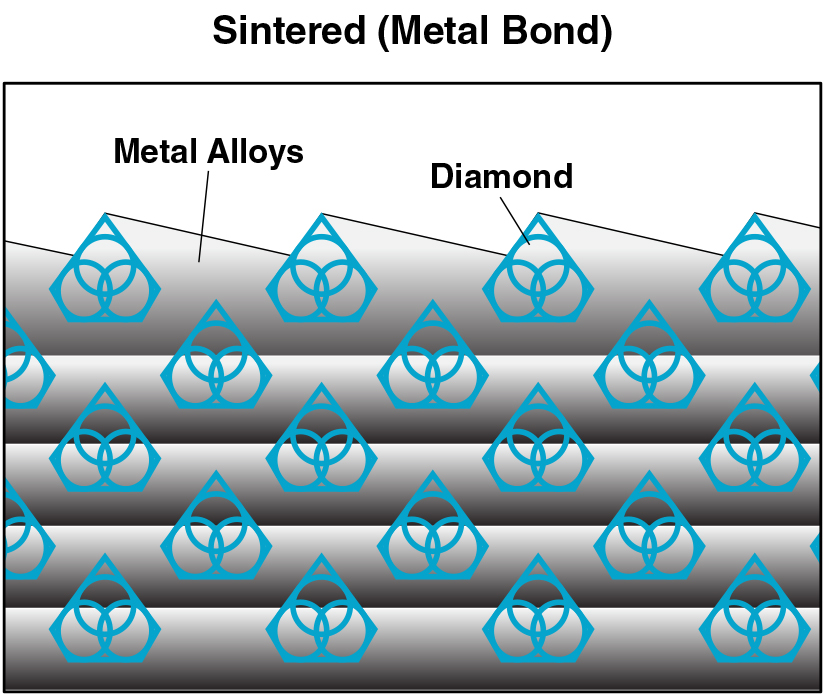

The newly exposed diamonds don’t effect diamonds already working on the material. Unlike many other diamond bonds, diamonds in a SMART CUT® Bond remains sharp and grow sharper with each cut, prolonging product life and consistent performance.

Diamonds or CBN Crystals are activated only at the exposed layer. As Bond Matrix layer begin to wear out, diamonds in a new Bond Matrix layer are immediately activated, substituting the already used up diamond layer. The SMART CUT® Diamond Hybrid Bond makes sure every diamond is in the right place and at the right time, working where you need it most.

This advanced formulated open diamond bond design insures minimal chipping, fast cut, constant speed of cut, minimal cutting noise, and most important of all, consistent performance.

Diamond & CBN tools made utilizing SMART CUT® technology are much more aggressive than your conventional tools. They can cut faster, while still leaving behind a smooth finish free of material deformation.

In most cases tools manufactured utilizing SMART CUT® technology, will outlast other conventional material (sintered), resin, and nickel bonded diamond & CBN tools. SMART CUT® diamond & CBN tools are more sturdy than tools manufactured with conventional technologies. They are capable to retain their form and bond configuration all the way through the tools life.

SMART CUT Sintered (Metal Bond) Tools have diamonds crystals oriented and evenly positioned inside bond matrix. Unlike Many Other Tool Types, they wear evenly, and are known for their consistency. You will get consistent cutting speed, and overall consistent performance, with minimum amount of dressing even on the hardest to cut materials
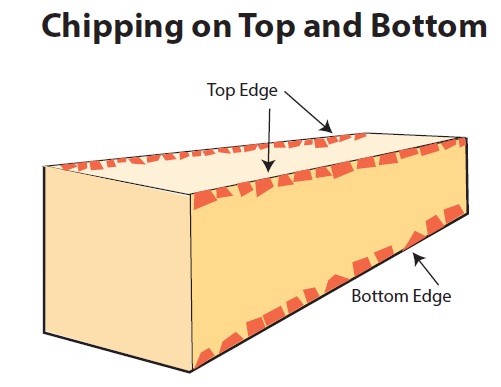
SMART CUT® Sintered (Metal Bond) Tools have diamonds oriented and evenly distributed in a bond matrix. Providing faster, freer cutting action with minimum heat generation. This translates in improved surface finish and minimum chipping.

SMART CUT® Sintered (Metal Bond) Diamond Tools are the best investment you can make! Although they may cost more than some Sintered (Metal Bond) Tools. They will more than pay for themselves in terms of overall performance and provide best Return on Investment.

Only the highest quality synthetic diamonds and raw materials are used in the manufacturing process. The highest quality standards and product consistency is maintained, using sophisticated inspection and measurement equipment.
Optimize your application to ultimate level of efficiency


Diamond Concentration – Diamond Concentration is still a factor in determining the life and cutting speed of your Diamond Sectioning/Wafering Blade. Higher diamond concentration is recommended and usually used for cutting softer and more abrasive types of materials. However, the trade off is significantly slower cutting speed. Low diamond concentration is recommended and widely used for cutting ultra hard and brittle materials.
Low Diamond Concentration - typically low concentration wafering blades should be for cutting ultra hard and brittle materials such as ceramics and glass. In Low Concentration Wafering Blades, diamond works by fracture process. Pressure on each diamond crystal/particle is higher which provides enough stress to chip off small flakes in the cut.
High Diamond Concentration - High concentration diamond wafering blades are recommended for cutting metals, plastics and polymers. In this application, materials cut by a plowing mechanism. In this applications diamond plough through the material, work hardened strips of materials become brittle and break off. The greater number of diamond by volume, the quicker the cutting action will be. Increasing the number of diamond s also lowers the per unit force. For metals where it is possible to induce deep deformation layers, a lower per unit force is desirable to reduce the deformation during the cut.

Wafering blade thickness typically ranges from .006” to .040” (1mm). Thinner and thicker wafering blade are available, frequently from stock upon request. Kef thickness typically increases with blade diameter (in proportion to diameter of the blade). Kerf is the amount of material removed from the material/sample due to the thickness of blade passing though the material/sample. Blade thickness is important for users requiring most minimal amount of material loss during sectioning
For example if the user requires precision position of the cutting plane relative to the detail on the sample (IC circuit for example), a thinner and smaller diameter blade would be best for this application. Blades ranging from 3” to 5” (75mm to 125mm) in diameter and thickness .006” to .015” (0.2mm to 0.4mm) would be bet suited for this purpose. There are large variety of factors that will contribute to optimal blade thickness for your material/application Including your desired cutting speed, load/feed rate, material diameter, thickness, hardness, density, and shape. As well as skill & experience of the operator. Thicker wafering blades are more stiff and can whistand higher loads/feed rates. Another advantage of thicker kerf blades is they are more forgiving to operator error and abuse. Thicker kerf blade are recommended for use in environment where large number of individuals will be sharing and using same equipment. Perfect for less experienced and novice saw operators, such as in University laboratory.
.

Diamond Mesh Size plays a major role in determining your cutting speed, cut quality/surface finish, level of chipping you will obtain, and material microstructure damage you will obtain. Diamond Mesh size does have considerable effect on cutting speed. Coarse Diamonds are larger than finer diamonds and will cut faster. However, the tradeoff is increase in material micro damage. If you are cutting fragile, more delicate materials then finer mesh size diamond wafering blades are recommended.

Metal bonding offers long life and durability, while resin bonding creates less heat, provides better surface finish and is well suited for cutting hard, delicate or brittle materials.

typically wafering blade diameters range form 3” (75mm) to 8” (200mm). Wafering blade diameter should be selected based on material diameter and thickness being cut. Smaller diameter wafering blades are thinner than the larger diameter blades and are more prone to bending and warping. Although large diameter blades are thicker, they are typically used for cutting larger and heavier samples at higher loads and speeds than smaller blades

load/feed rate applied to wafering blades typically vary from 10-1000 grams. Generally, harder specimens are cut at higher loads and speeds (e.g. ceramics and minerals) and more brittle specimens are cut at lower loads and speeds (e.g. electronic silicon substrates). The Speeds/RPM’s you are using, shape/geometry of the specimen, and how the specimen is being clamped/hold in place will affect the load that can be used for your application.

Ability of the bond matrix to hold diamonds. As the hardness of the bond is increased, its diamond retention capabilities increase as well. However the trade off is slower cutting speed. Life of the diamond blade is usually increased with hardness of its bond matrix. Bonds are designated on their scale of hardness from Soft, Medium, and Hard. There are dozens of variations and classification schemes based on bond degree of hardness or softness.
Using diamond blades with optimum bond hardness for your application is important to successful precision diamond sawing operation. Bond matrix that is too soft for the material being cut will release diamond particles faster than needed, resulting in faster wear and shorter diamond blade life. On other hand bond matrix that is too hard will result in much slower cutting speeds and require constant dressing to expose the next diamond layer. As rule of thumb, harder materials such as sapphire and alumina generally require a softer bond. Whereas softer and more brittle materials require a harder bond.

Most wafering blades are used between 50 to 6,000 RPM’s Typically harder and more denser materials such as Silicon Carbide, are cut at higher RPM’s/speeds Where more brittle materials such as silicon wafers and gallium arsenide are cutting at lower RPM’s. Low Speed saws RPM’s are typically limited from 0 to 600 RPM’s. Where high speed saws offer much large variety of cutting speeds from 0 to 6,000 RPM’s.




Signup for email offers, updates, and more

UKAM Industrial Superhard Tools is a U.S. High Technology, Specialty Diamond Tool & Equipment manufacturer. We specialize in producing ultra thin & high precision cutting blades and precision cutting machines diamond drills, diamond micro tools, standard & custom advanced industrial diamond tools and consumables.
Shipping Methods

Safe & Secure Payments

© Copyright 1990-2024. UKAM Industrial Superhard Tools – Terms of Use
No products in the Quote Basket.
No account yet?
Create an AccountSign up to receive exclusive usage recommendations, Illustrated Trouble Shooting Guides & Sales